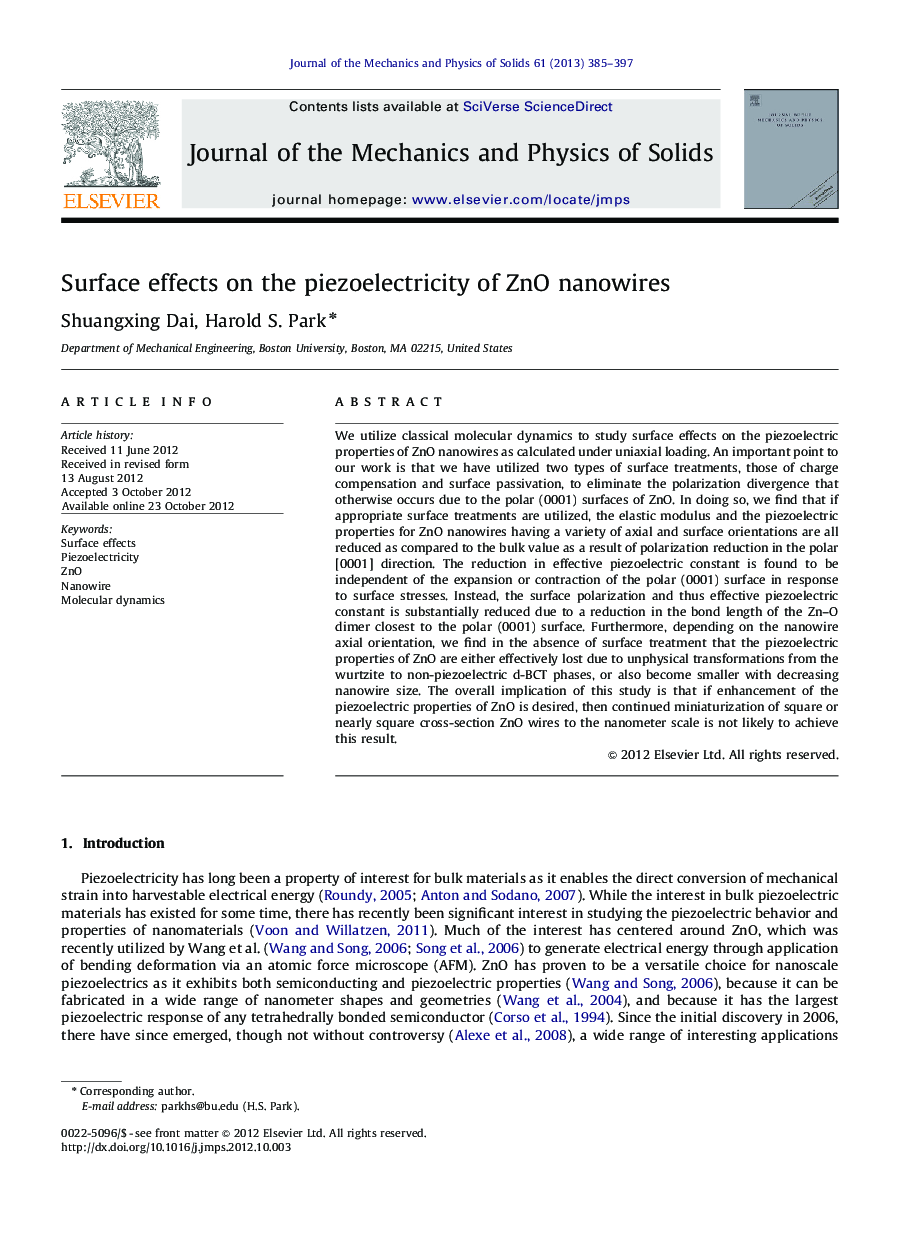| Article ID | Journal | Published Year | Pages | File Type |
|---|---|---|---|---|
| 797902 | Journal of the Mechanics and Physics of Solids | 2013 | 13 Pages |
We utilize classical molecular dynamics to study surface effects on the piezoelectric properties of ZnO nanowires as calculated under uniaxial loading. An important point to our work is that we have utilized two types of surface treatments, those of charge compensation and surface passivation, to eliminate the polarization divergence that otherwise occurs due to the polar (0001) surfaces of ZnO. In doing so, we find that if appropriate surface treatments are utilized, the elastic modulus and the piezoelectric properties for ZnO nanowires having a variety of axial and surface orientations are all reduced as compared to the bulk value as a result of polarization reduction in the polar [0001] direction. The reduction in effective piezoelectric constant is found to be independent of the expansion or contraction of the polar (0001) surface in response to surface stresses. Instead, the surface polarization and thus effective piezoelectric constant is substantially reduced due to a reduction in the bond length of the Zn–O dimer closest to the polar (0001) surface. Furthermore, depending on the nanowire axial orientation, we find in the absence of surface treatment that the piezoelectric properties of ZnO are either effectively lost due to unphysical transformations from the wurtzite to non-piezoelectric d-BCT phases, or also become smaller with decreasing nanowire size. The overall implication of this study is that if enhancement of the piezoelectric properties of ZnO is desired, then continued miniaturization of square or nearly square cross-section ZnO wires to the nanometer scale is not likely to achieve this result.
